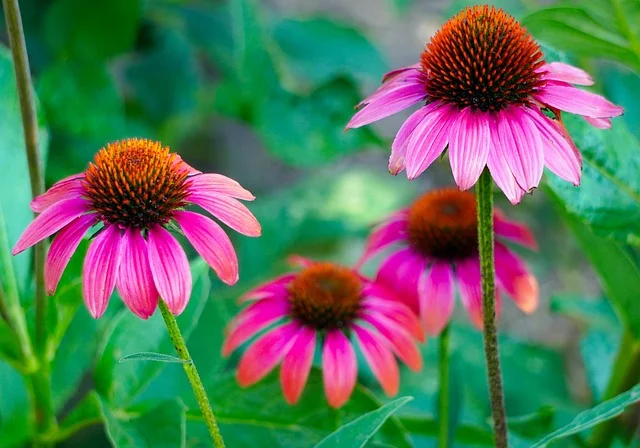Coneflower (Echinacea purpurea): A Garden Favorite for Beauty and Pollinators in 2024
Table of Contents

- Type: Perennial
- Features: Tough, drought-tolerant, and attracts pollinators. Perfect for Midwestern and prairie gardens.
If you’re looking to add a splash of color, resilience, and ecological benefit to your garden, Echinacea purpurea, commonly known as coneflower, is a fantastic choice. This North American native perennial is renowned for its vibrant, daisy-like blooms and is a top favorite among pollinators like bees and butterflies. Here’s why coneflowers deserve a spot in your garden:

Stunning Visual Appeal
Coneflowers bloom from early summer through fall, displaying large, showy petals in shades of purple, pink, and sometimes white. The prominent central cone of the flower, which gives it its name, is not only an eye-catching feature but also a beacon for pollinators. As the petals droop, the cone stands tall, creating a unique, bold silhouette that contrasts beautifully with softer garden plants.

Easy to Grow and Low Maintenance
Whether you’re an experienced gardener or just starting, coneflowers are one of the easiest plants to cultivate. They’re drought-tolerant once established, thrive in full sun, and are not fussy about soil conditions. This makes them ideal for various garden settings, including meadows, borders, and cottage gardens. Just give them well-drained soil, and they’ll reward you with blooms year after year.

Pollinator Magnet
Echinacea purpurea is a favorite of bees, butterflies, and other beneficial insects. By planting coneflowers, you’ll be creating a lively, biodiverse space in your garden. Their nectar-rich flowers provide an important food source for pollinators, especially during the hot summer months when other blooms might be scarce.
Attractive in All Seasons
Even when the flowers fade, coneflowers remain attractive. Their seed heads add texture to the winter garden, providing visual interest and food for birds like finches. The upright stems and seed-filled cones make a statement in a snowy landscape, offering both beauty and function.
Versatility in Garden Design
Coneflowers are incredibly versatile. They pair well with grasses, ornamental shrubs, and other perennials like black-eyed Susan, yarrow, and lavender. Their height—ranging from 2 to 5 feet—makes them perfect for the middle or back of a flower border. For an effortless, natural look, mix them into wildflower meadows or mass plantings.
Herbal Benefits
Beyond their garden beauty, coneflowers have a long history in herbal medicine. Echinacea is commonly used to support immune health and is popular in teas and supplements. While your garden flowers may not be for consumption, they certainly add to the plant’s fascinating allure

Tips for Success with Coneflowers
Plant in full sun: Echinacea thrives in 6-8 hours of sunlight daily.
Well-drained soil: They don’t like to sit in water, so good drainage is essential.
Deadhead for extended blooming: Removing spent blooms encourages more flowers throughout the growing season.
Mulch in winter: Though coneflowers are hardy, a little mulch will protect them from the harshest winter conditions.
Leave seed heads for wildlife: In the fall, resist the urge to cut everything back.
Coneflowers are a beautiful, eco-friendly addition to any garden. They bring vibrancy, attract beneficial wildlife, and are a symbol of effortless gardening success. Consider adding Echinacea purpurea to your garden this season, and watch your space come alive with color and activity!

Leave a Reply